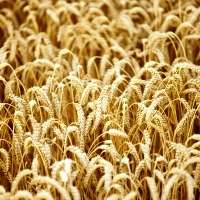New Australia-China centre to map entire wheat protein genome

A new joint research centre at Murdoch University is aiming to improve international competitiveness for Australian grain growers by mapping the entire wheat protein genome.
Professor Rudi Appels, Director of the new Australia-China Centre for Wheat Quality, said his researchers were looking to duplicate the Human Genome Project, but for the 100,000 proteins found in wheat.
"Wheat proteins control attributes for disease resistance and climate adaptability as well as quality traits such as colour, texture and taste," Professor Appels said.
"Right now only about half of the grain proteins, known as glutenins, have been identified, leaving producers with a 50-50 chance of breeding to the grain quality standard they want to achieve.
"Our goal is to define attributes for the other 50 per cent, which will have a major impact on future food security in the region and boost Australian wheat products abroad."
Professor Appels said the idea for the centre arose on Perth's Cottesloe Beach in 2004 when he and Professor Wujun Ma were hosting Professor Zhonghu He from the Chinese Academy of Agricultural Sciences.
"We were watching the sunset over the ocean and had this idea to integrate our work, because we realised we were the only ones looking at wheat quality at the molecular level in this region," Professor Appels said.
"Professor He and his team are among the globe's best. Partnering with them provides us with world-class expertise as well as invaluable information on what consumers in China and Asia want from their grain products.
"For example, China is incredibly differentiated in the type of noodles they eat. In the north, the noodles are white and chewy. In the south, they have to be softer and slightly creamy.
"My dream is to be able to tailor our breeding to what these markets want and stake Australia's reputation as an exceptionally reliable and desirable producer."
In addition, Professor Appels said that improving wheat used in bread would be beneficial for future food production.
"Australia generally gets a hot finish to summer, which affects protein levels and impacts bread quality. Our overseas competitors produce grain that is 13 to 14 per cent protein, but ours is typically 10 to 11 per cent, which puts Australia on the back foot," Professor Appels said.
"We think the world is going to face warmer climate conditions in the future, so if we can find the right combinations of genes to produce strong dough at lower protein levels while improving taste, the world is going to be turning to us.
"Not only is this Centre good for Murdoch University, China and Australia, it stands to have a huge impact for consumers around the globe."
Provided by Murdoch University


















